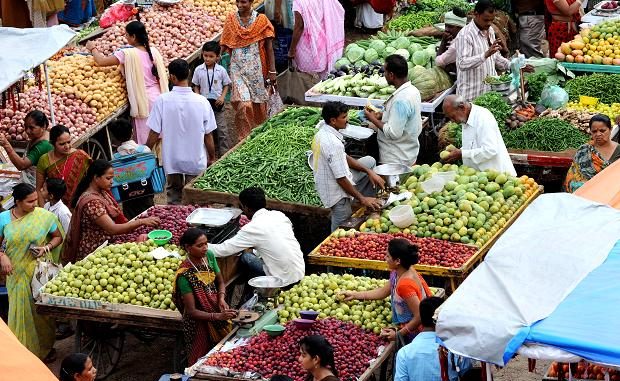
By Prabodh Krishna
We need intervention that can help in aggregating farmers and their produce, establishing a direct mode of physical and information exchange between buyers and farmers
Agricultural marketing in India involves two major stakeholders, on one end, it’s the farmers and on another, the consumers. Consumers may include end consumer, processor, retailer and somehow the exporter. Intermediaries and the other entities in the chain enable movement of goods and carry out other supportive activities.
Farmers in the existing chain mainly suffer issues like a minor lot of individual nature for sale, poor knowledge of market requirements and mainly the inadequate ability of post-harvesting infrastructure along with financing issues. It finally leads to a low realisation which makes farmers’ suffer a lot. Additionally, the fragmentation of markets reduces competition and exposes the farmer to a cartel like situation with the agricultural produce marketing committees. This normally results in low prices to farmers and a heavy burden of needs lead a farmer to seek desperate measures like suicide. Aggregation of small lots by farmers can lead to larger lots and their collective bargaining power may fetch those better prices in the market.
Consumer Segment
It is of diverse nature and may include retailers, traders, individuals and sometimes exporters. While specific needs may vary for all, a few generalised issues may remain the same. For instance, entire consumer class faces an uncertain supply, uncertain quality and logistical issue when dealing directly with the farmers that are small growers but may be large in numbers. It may lead to high cost of purchase due to intermediaries and inefficient logistic infrastructure. It would do well for the buyers or consumers to work more closely with the farmers, so that the farmers may get the right prices and buyers may get the right quality of products. Direct interaction also opens up multiple ways to tackle situations arising out of low production and other issues. The only problem is that a nation like India has millions of small and marginal farmers, which makes it a daunting task for the buyers.
This is the main reason of buyers remain dependent on middlemen. They add more cost and add a little value which ultimately raises the price. We need intervention that can help in aggregating farmers and their produce, establishing a direct mode of physical and information exchange between buyers and farmers. Interventions can be broadly classified into institutional and infrastructural. For Instance, to reduce issues arising to farmers due to scale, it would be helpful to have a group of farmers. Farmers’ producer organisations (FPO’s) are somehow doing the same. These farmer groups can collectively handle credit issues, post-harvest management issues etc. They can also attract institutional buyers in bulk purchases. This certainly tackles the infrastructural issue as well, because such FPO’s can deal with multiple logistic issues along with general issues.
In BW Businessworld’s earlier reports, agriculture produce and livestock marketing act 2017 had been highlighted, which may lead to a conclusive resolution for such agricultural marketing gaps. In the words of former agriculture economic advisor to the Prime Minister, V. S. Vyas, “reforms of any kind may be fruitful only when they reach out to farm goods producers and the consumers”.
Source: BW Businessworld

Leave a Reply